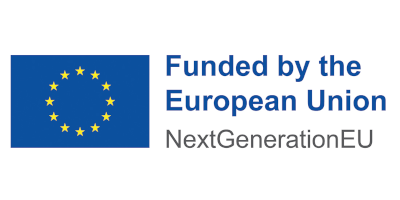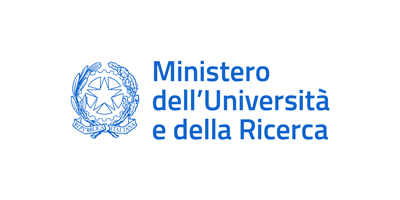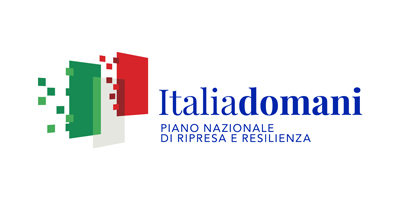ConTexts
Manuscript Transmission and Generic Hybridity in the ‘Late’ "Íslendingasögur"
Project
Overview
Within the rich and diverse literary heritage that medieval Icelandic sagas constitute are the so-called ‘post-classical’ or ‘late’ ‘Íslendingasögur’ (Sagas of Icelanders), a group of texts from the fourteenth century that are attested primarily in manuscripts from the fifteenth. They are remarkable in many ways, including that they play upon literary conventions and they defy strict categorizations of genre. However, scholars have so far largely neglected them for the same reasons, disregarding them as extravagant or because they are challenging to consider from the genre perspective.
The overall objective of the ConTexts project is to offer a better comprehension and thus also a re-evaluation of these largely neglected texts, by studying them at once individually and from within their manuscript contexts. The focus is on the characteristics they display, notably in terms of genre, and on the intertextual connections that can be established between them and the often diverse material they are copied alongside. The socio-cultural contexts of production and use of the texts and their manuscripts are also investigated.
Reading these sagas within their material contexts (within manuscripts) sheds light on both their individual nature and on the dynamics characterizing the codexes in which they appear. In turn, this provides us with clues that can be used to figure out the hidden logic embedded in each specific collection of texts, while also disclosing information about the respective contexts of production and use. The new knowledge the project yields is a novel and thorough study of previously neglected texts, which promotes their investigation as legitimate and interesting products of their own time, as well as it crucially contributes to the critical debate and to future studies in the field.
Description
The textual culture of the Icelandic Middle Ages, remarkable for its great diversity and extent in terms of genres and modes, and for the extraordinary amount of parchment and paper manuscripts and documents that have come down to us, includes ‘sagas’: prose narratives, at times containing embedded poetry, that were redacted from the late twelfth century up to the end of the fifteenth, and in some cases even further. These texts are diverse in their turn, notably in terms of subject-matter, setting, and style, but also similar in the same respects, which has led modern scholars to group them by genre, although not without controversy. More precisely, the current taxonomy is the outcome of a reconstructive effort made by generations of scholars in this field from the late 1820s onwards; however, it is a literary convention, as no single saga strictly fits the genre type it has been customarily ascribed to. Recent scholarship has indeed shown that the saga is best understood as a literary macrogenre marked by a certain degree of heterogeneity in terms of structure and style. Some sagas, then, are more heterogeneous than others, especially late medieval ones. Among them are the so-called ‘post-classical’ or ‘late’ ‘Íslendingasögur’ (Sagas of Icelanders), a group of roughly eleven to sixteen sagas that were produced mainly during the fourteenth century, but are attested primarily in manuscripts from the fifteenth. These sagas are appealing because they play with literary and social conventions, and they defy categorisations of genre. However, scholars have so far neglected them for the same reasons, or disregarded them as extravagant, not ‘canonical’, or because they are challenging to consider from the genre perspective.
The ConTexts project bridges this gap, by studying and re-evaluating the ‘late’ ‘Íslendingasögur’, not only because they have too long been neglected and stigmatized, but also because they have greater chances to be considered within the critical debate now that a spotlight is being directed towards a re-discussion of genre within saga literature. The action is implemented following the suggestion made in recent studies on the saga genres that the material aspects of the manuscript transmission of these texts are crucial within any consideration of the sort. More precisely, four ‘late’ ‘Íslendingasögur’ are investigated at once individually and from within the main manuscript contexts in which they appear. The focus is on the characteristics they display, notably in terms of narrative style, structure, and genre, as well as on the intertextual connections that can be identified between them and the often diverse material they are copied alongside. In turn, this provides us with clues that can be used to figure out the hidden logic embedded in each specific collection of texts, and to assess the new meanings it might generate, ultimately affecting the interpretation of the texts and their transmission as well. Finally, the texts are analysed in their manuscript contexts as bearers of mentalities and ideologies, and as instruments of collective memory about the Icelandic past. This, in turn, sheds light on the socio-cultural contexts in which the specific manuscripts were produced and used.
Sagas and manuscripts
"Finnboga saga ramma" ("The Saga of Finnbogi the Mighty")
“Finnboga saga ramma”, the “Saga of Finnbogi the Mighty”, is an ‘Íslendingasaga’ from the first quarter of the fourteenth century. It has been labelled a ‘late’ or ‘post-classical’ ‘Íslendingasaga’ both because of its late composition and because it shares part of the setting and part of the style with the sagas of the same genre that have been considered ‘classical,’ while it also emancipates itself from them by widening their horizon.
It does so both literally, as the protagonist reaches faraway places such as Byzantium – which nevertheless occasionally feature in ‘classical’ ‘Íslendingasögur’ as well, such as “Laxdæla saga”– and figuratively, in that the author plays with conventions, such as by combining elements that pertain to different generic repertoires.
Its primary manuscripts are AM 132 fol. (Möðruvallabók), from the fourteenth century, and AM 510 4to (Tómasarbók), from the middle of the sixteenth. The codexes differ not only in terms of dating, but also of content, which makes the study of the saga from the genre perspective even more significant.
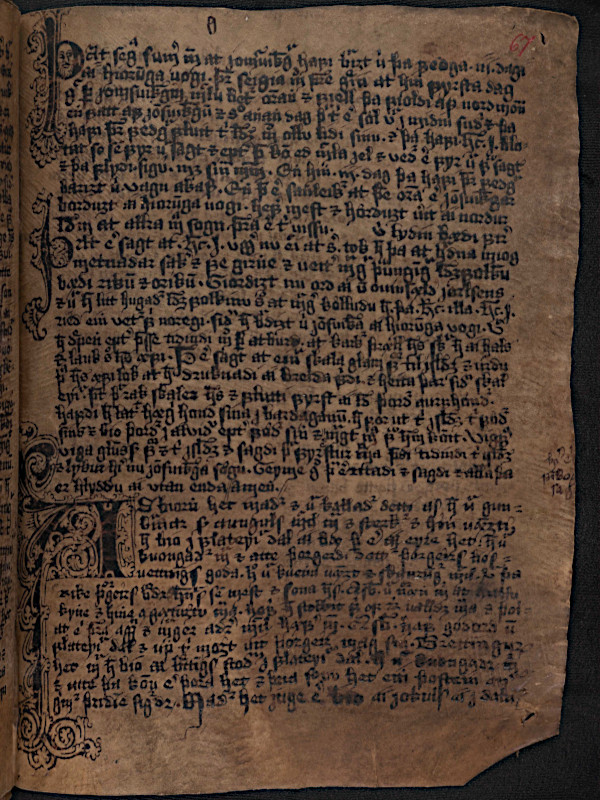
"Króka-Refs saga" ("The Saga of Refr the Sly")
“Króka-Refs saga”, the “Saga of Refr the Sly’”, is an ‘Íslendingasaga’ from the fourteenth century. It has been grouped among the ‘late’ sagas of the genre, not only because of its late composition, but also because it challenges the conventions characterizing the ‘classical’ ‘Íslendingasögur’, most notably the setting and the style.
Indeed, the work is set predominantly in Countries other than Iceland, the chronology extends over the Saga Age, and hyperbole and parody are used, as well as elements of repertoires that are typically associated with other saga genres, notably ‘fornaldarsögur’ (Legendary sagas) and ‘riddarasögur’ (Chivalric sagas). Interestingly, sagas belonging to such genres accompany the text in its oldest attestations.
This is especially true of the only medieval vellum that preserves the saga in its entirety, AM 471 4to, from the second half of the fifteenth century, and of another fifteenth-century vellum, AM 586 4to (Arnarbælisbók), preserving a good fragment of the saga, corresponding to the version contained in AM 471 4to, with some minor differences.
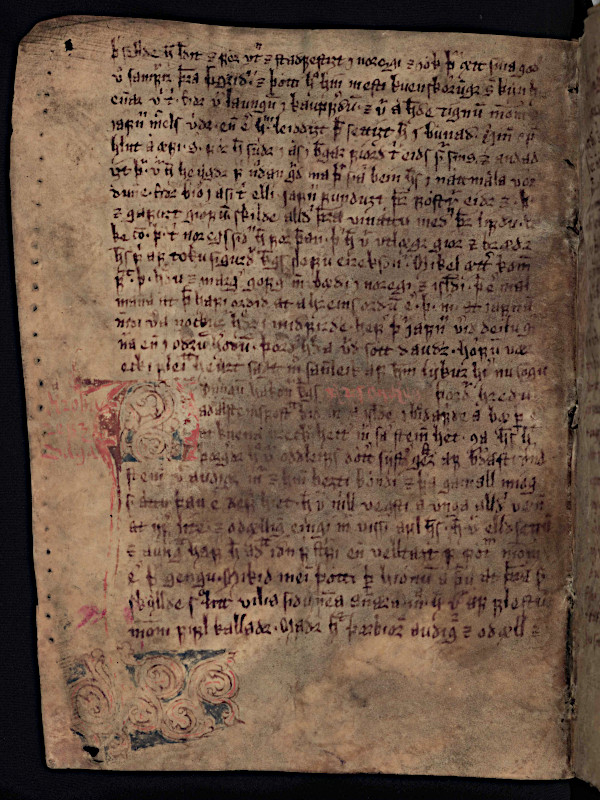
"Bárðar saga Snæfellsáss" ("The Saga of Bárðr Snæfell-god")
“Bárðar saga Snæfellsáss”, the “Saga of Bárðr Snæfell-god”, is an ‘Íslendingasaga’ written in the late thirteenth or early fourteenth century.
The saga has been labelled a ‘late’ ‘Íslendingasaga’ because of its late composition and its focus on the supernatural, while it also incorporates material from a variety of sources, notably genealogies and place-name legends, which it elaborates to constitute an innovative text.
The saga is preserved, most notably, in AM 564a 4to, from the late fourteenth or early fifteenth century, and in AM 551a 4to, one leaf from c. 1500 or the beginning of the sixteenth century, which is related to AM 489 4to, from the second half of the fifteenth century.
Interestingly, these codexes display the saga in different contexts, i.e. along texts belonging to different genres.
"Gull-Þóris saga" ("The Saga of Gold-Þórir")
“Gull-Þóris saga”, the “Saga of Gold-Þórir”, also known as “Þorskfirðinga saga”, or the ‘"Saga of the People of Þorskafjörður" – as it is set mainly in Þorskafjörður in the Icelandic Westfjords – is an ‘Íslendingasaga’ from the early fourteenth century.
It has been labelled a ‘late’ saga of the genre because of its late composition and of its display of sections that clearly describe different saga narrative worlds, thus being challenging to describe from the perspective of genre.
The saga is preserved in one medieval vellum codex only, AM 561 4to (c. 1390-1410), which also contains two other ‘Íslendingasögur’ ("Reykdæla saga" and "Ljósvetninga saga") and three ‘rímur’ – an interesting context from the generic point of view.
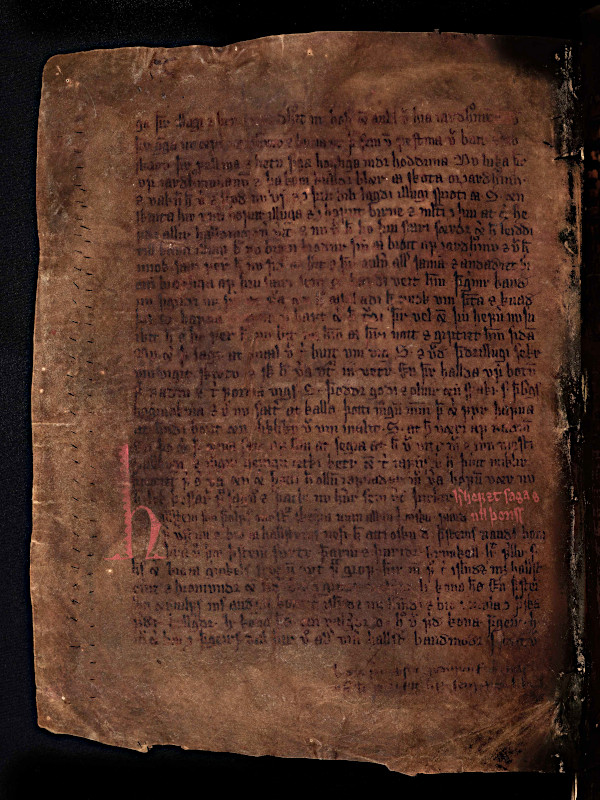
Objectives and results
The research objectives and results achieved are the following:
To investigate the selected texts individually and in relation to the texts of the main collections they are part of.
Achievement 1
The selected texts have been read in their modern critical editions, and then in parallel with the texts they are copied alongside in the manuscripts, which have also been read in their modern critical editions, where feasible. This has been done of “Finnboga saga ramma”, “Króka-Refs saga”, and “Bárðar saga Snæfellsáss”, and the research on “Gull-Þóris saga” in this way is almost complete.
To identify the intertextual connections that can be established between the selected sagas and the sometimes diverse material they are copied alongside in the respective collections.
Achievement 2
Each manuscript collection has been assessed on the basis of the interactions that could be identified among the texts characterizing it, notably in terms of narrative modes and genre. This has been done of “Finnboga saga ramma”, “Króka-Refs saga”, and “Bárðar saga Snæfellsáss”, and the research on “Gull-Þóris saga” in this way is almost complete.
To compare the dynamics that involve the sagas under analysis and the texts of the main collections in which they are found, while also considering the material aspects that characterize the manuscript transmission of such sagas more in general.
Achievement 3
The changing contexts of the sagas under analysis have been compared and contrasted. This has been done of “Finnboga saga ramma”, “Króka-Refs saga”, and “Bárðar saga Snæfellsáss”, and the research on “Gull-Þóris saga” in this way is almost complete.
To formulate hypotheses regarding the reading and the interpretation of the sagas under analysis, and therefore from the perspective of the material condition in which they have been handed down to us.
Achievement 4
The contexts of production and use of the manuscript collections preserving the sagas under analysis have been investigated. This has been done of “Finnboga saga ramma”, “Króka-Refs saga”, and “Bárðar saga Snæfellsáss”, and the research on “Gull-Þóris saga” in this way is almost complete.
Outreach
Books
- “The Neglected Sagas: A New Study of the Late 'Íslendingasögur,'” articulated into the following chapters: “The saga-genre debate: an overview”, “The ‘late’ Íslendingasögur”, “Four case-studies”, “Towards a re-assessment of the ‘late’ Íslendingasögur” (in preparation);
- “Áns saga bogsveigis” (Saga of Án the Archer) [ITA], translation into Italian. The translation, which was published in 2023 by Pisa University press (for the series “Borealia. Studi di Filologia germanica, nederlandistica e scandinavistica”), was provided with a philological commentary discussing some of the aspects considered within the ConTexts project, such as generic hybridity and the dynamics of Medieval manuscript contexts.
Scientific articles
- “Testi screditati, testi accantonati. Per una rilettura delle Saghe degli islandesi ‘post-classiche’ o recenziori”, a scientific article that is currently under review, and will appear in a volume dedicated to Scandinavian Studies to be published by Ca’ Foscari Digital Publishing in 2025.
- “Endeavouring to Grasp the Elusive: A New Study of 'Finnboga saga ramma”, a scientific article that is about to appear (December 2024) in the open access and Web of Science international journal “Gripla” – publishing specifically on Old Icelandic literature and manuscript culture.
Conferences and lecturing
- Leeds “International Medieval Congress 2024”, held in July 2024. Title of the contribution: “Denigrated texts, marginalized texts. For a re-evaluation of the ‘post-classical’ or ‘late’ Sagas of Icelanders”;
- “XI Italian Conference in Scandinavian Studies”, which was held in Milan in October 2023. Title of the contribution: “Per una rilettura delle Saghe degli Islandesi ‘post-classiche’ o ‘recenziori’”;
- Academic course “Germanic Philology 2 mod. 1” (Spring 2023, Spring 2025), aimed at MA and international students. The module is intended for students in the second year of the Master’s Degree Programmes in ‘Language Sciences’ and in ‘European, American and Postcolonial Languages and Literatures’. It is designed as an introduction to the study of Old Norse language and literature (prose, taught in 2023) / Old Norse literature (poetry and prose, to be taught in 2025), and it aims to give the students the opportunity to acquire advanced knowledge in Germanic Philology, as well as advanced learning skills that should enable them to continue to study in a manner that may be largely self-directed or autonomous.

